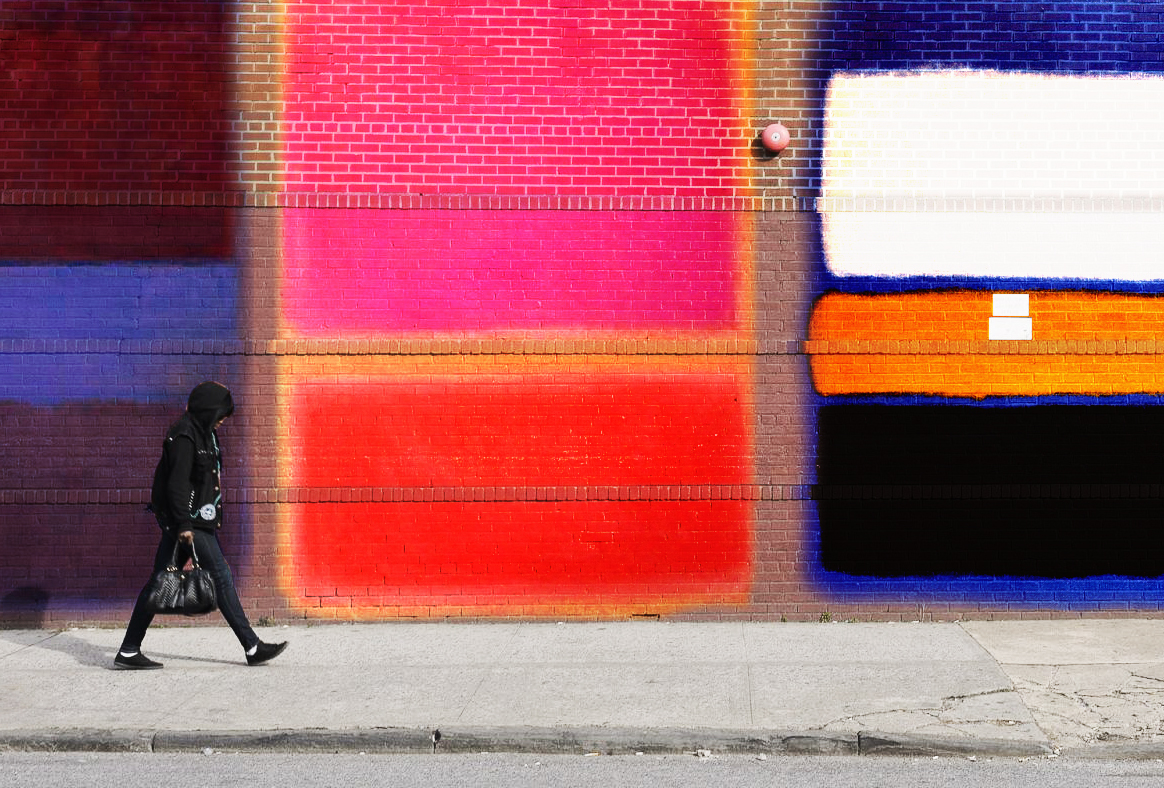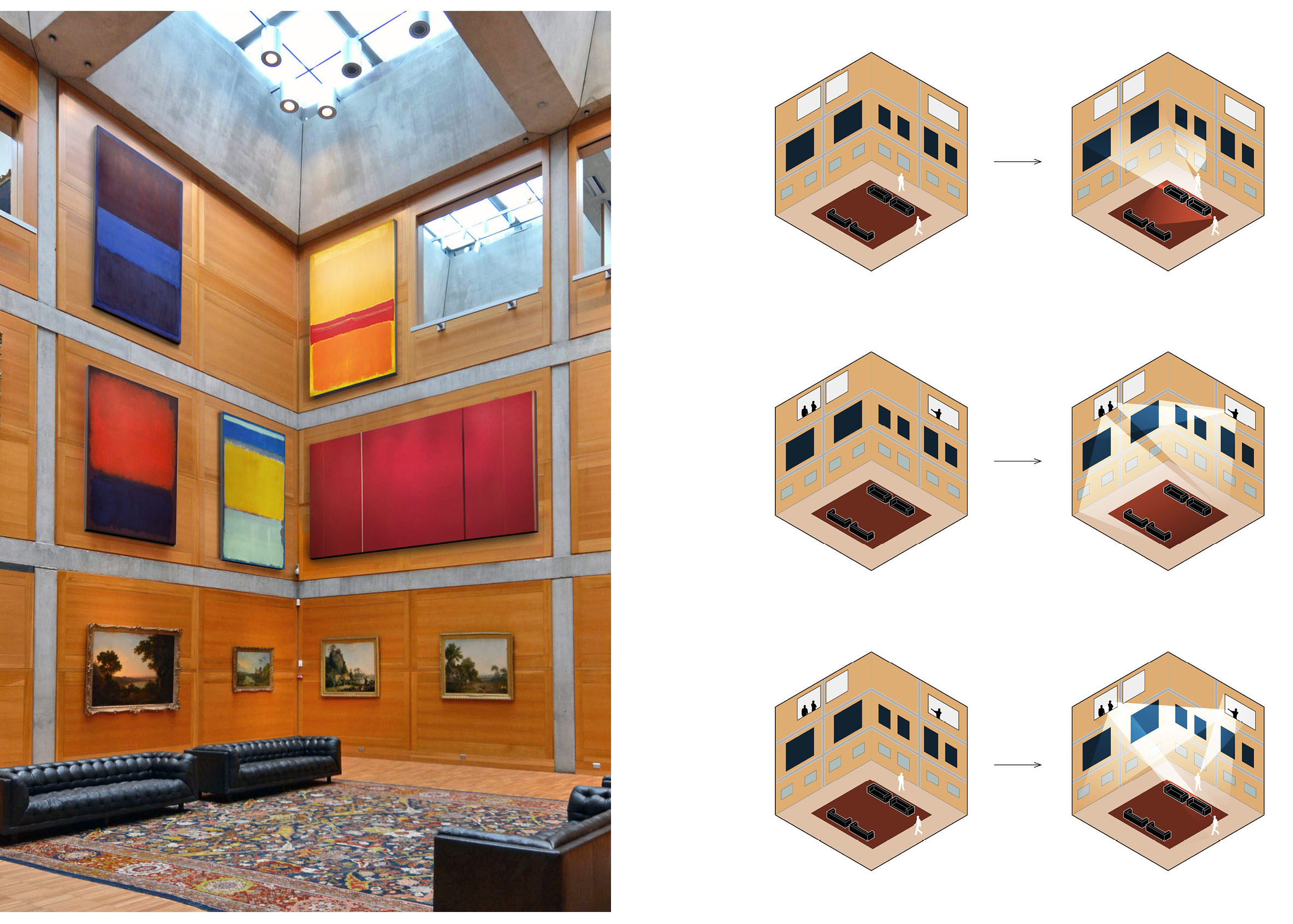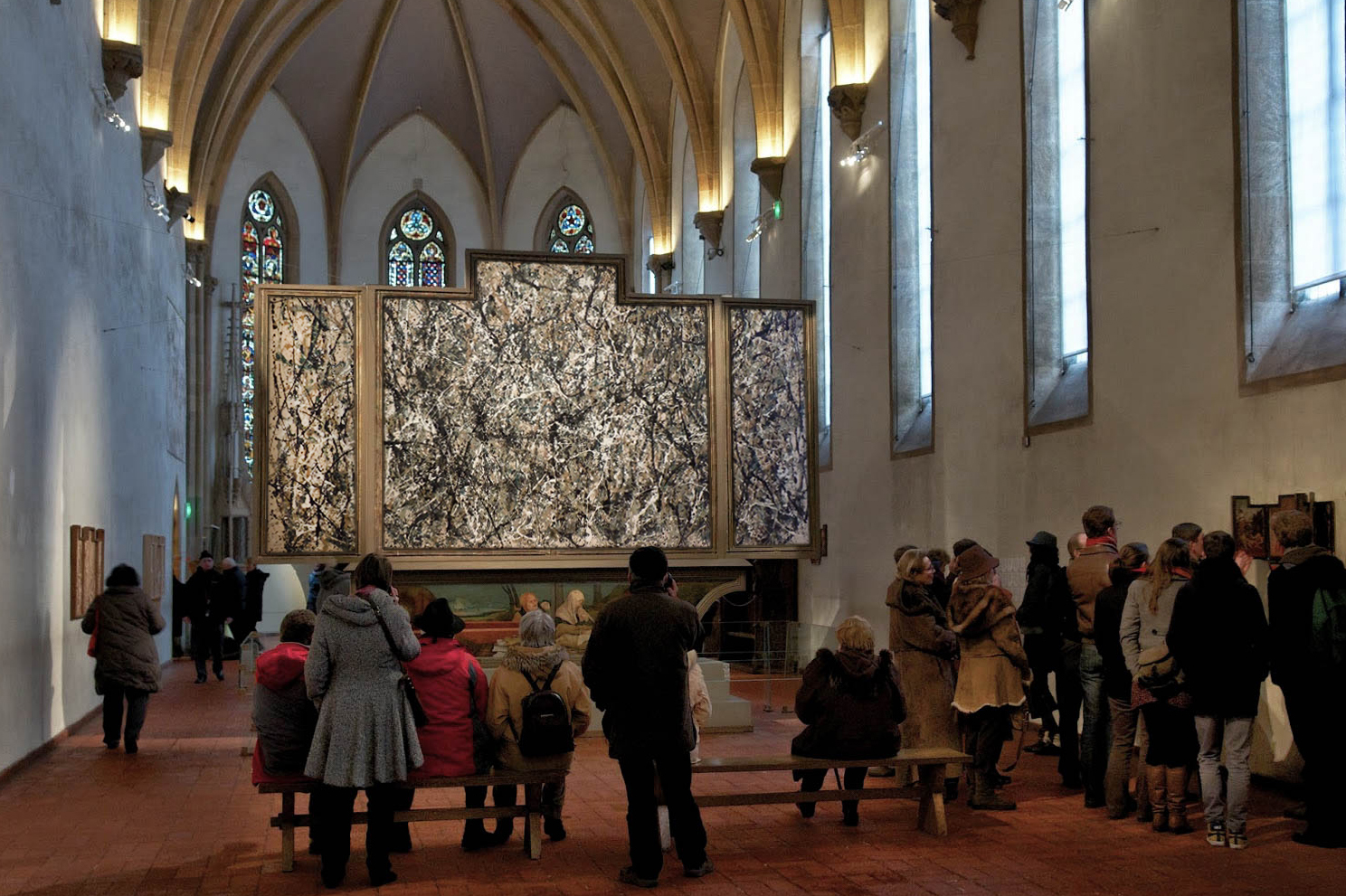The White Cube, Again

As the White Cube has been frequently criticized as a trivial default art gallery scheme, we were fascinated by its faults, and how its principles could be remedied to further a conversation of enhanced spectatorship in regards to contemporary art. Our initial explorations aimed to understand the White Cube’s rules in order to find a new way in which the display of paintings would break this paradigm, enhancing their reading or providing a further clarity of art itself. As a result, iconic paintings by Rothko and Pollock were estranged outside of the White Cube by repositioning them in different spatial contexts (YBAC and brick wall graffiti) that possibly challenge or reinforce their objecthood.
Another question raised by these observations was: what if the art uses the White Cube’s austere language beyond the boundaries and flatness of the canvas? Our investigation didn’t intend to recreate the transition from Abstract Expressionism into Minimalism and Post-Minimalism but rather, we were interested in examining the lost potential of paintings by Rothko and Pollock in their limitations to medium specificity and White Cube gallery model display.
Another question raised by these observations was: what if the art uses the White Cube’s austere language beyond the boundaries and flatness of the canvas? Our investigation didn’t intend to recreate the transition from Abstract Expressionism into Minimalism and Post-Minimalism but rather, we were interested in examining the lost potential of paintings by Rothko and Pollock in their limitations to medium specificity and White Cube gallery model display.
2016
with Valeria Flores
Published in RETROSPECTA 41
with Valeria Flores
Published in RETROSPECTA 41

 Installation view of “Jackson Pollock,” 1956–57, at Museum of Modern Art, New York.
Installation view of “Jackson Pollock,” 1956–57, at Museum of Modern Art, New York.Courtesy of MoMA


